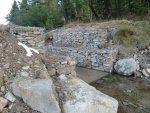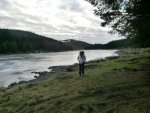oceanblue
New member
A substantial artificial lake (5 hectares) with about 1 Hectare of acid upland marsh at its upstream end which is a good habitat for palmate newts and common frogs needs repair work to the dam. (Location not far from my home in the Brecon Beacons but like field herping accounts I wish to be vague)
A substantial temporary lowering of water level is inevitable and after the works the restored lake may be smaller and the water table lower.
I gather the bog area will partly dry out and re-establish at about the same size or larger around the reduced lake.
My guess is November/December/January is the least disturbing time to perform major works for amphibians. There are not too many winter migrant birds to consider.
Is this timing the least harmful? Doing nothing is not an option.
A substantial temporary lowering of water level is inevitable and after the works the restored lake may be smaller and the water table lower.
I gather the bog area will partly dry out and re-establish at about the same size or larger around the reduced lake.
My guess is November/December/January is the least disturbing time to perform major works for amphibians. There are not too many winter migrant birds to consider.
Is this timing the least harmful? Doing nothing is not an option.


